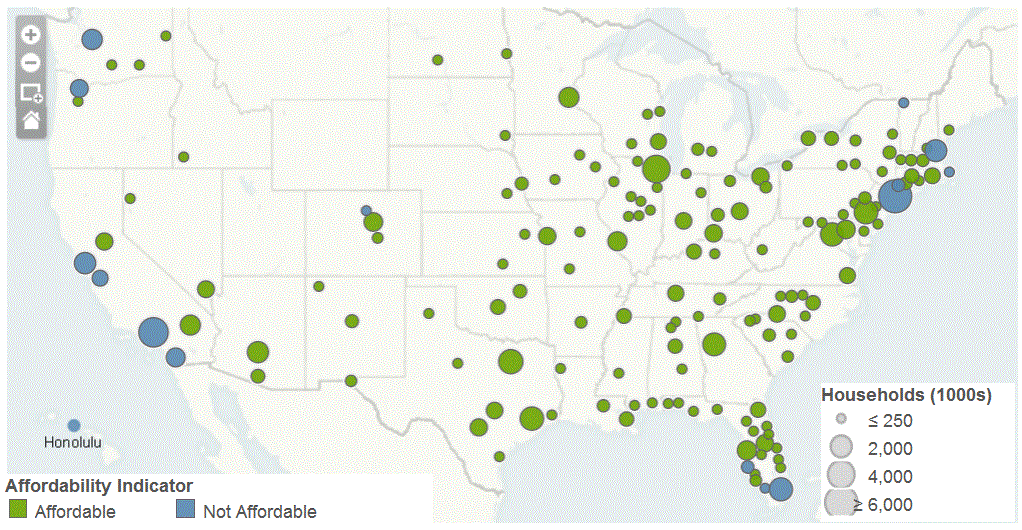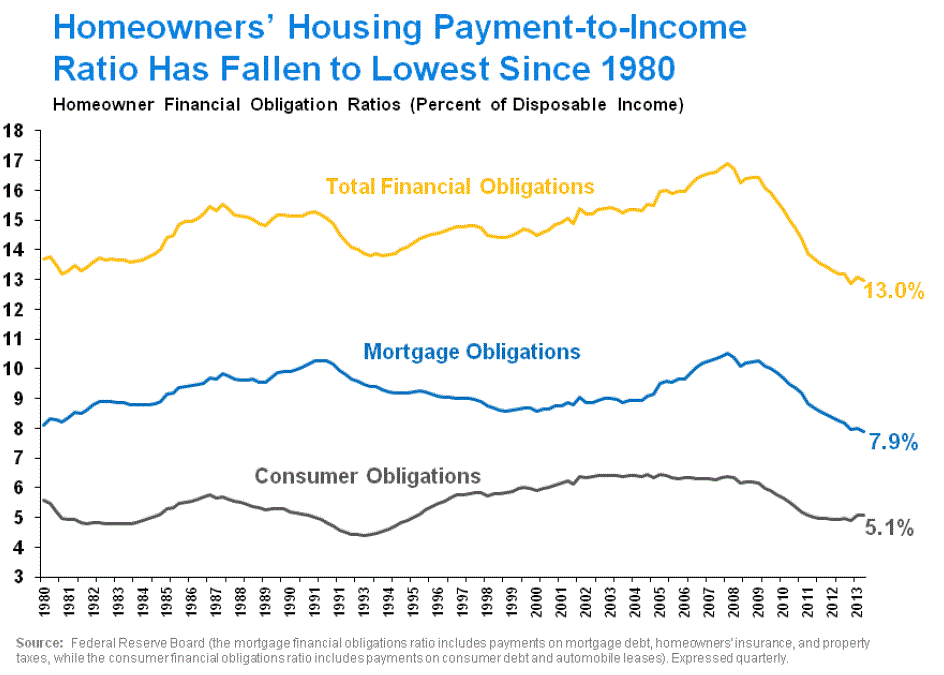Blog

As Mortgage Rates Rise, Affordability is Diverging
Freddie Mac’s December U.S. Economic & Housing Market Outlook looks at what the company’s chief economistrnFrank Nothaft and deputy chief Leonard Kieferrncall “diverging homebuyer affordability“, that is affordability that depends torna large extent on the part of the country in which one lives.</p
In June of this year the Outlook</ireported on how rising interest rates would affect homebuyer affordabilityrnand found that most markets were affordable and that rates would have to rise to about 7rnpercent before they became unaffordable to a typical family. Six months later interest rates are up byrnabout a half point and prices have been rising nationwide so Outlook took arnsecond look to see how housing affordability looks now and what it might lookrnlike in the future.</p
The economists say that mortgage rates are key to affordability and byrnthe end of September that affordability had eroded in many parts of the countryrnfrom where it was in March. Several ofrnthe largest markets on the coasts, representing about 28 percent of thernhouseholds in Freddie Mac’s data, had become unaffordable. Affordability is measured by the percentagernof households who could afford to buy a median priced home while earning thernmedian income for the area. If ratesrnincrease to 5 percent, then two-fifths of the metro areas would becomernunaffordable while in much of the Midwest and South affordability would remainrnhigh.</p
 </p
</p
Freddie Mac has created the interactive map above to show howrnaffordability could be affected at different rates. At a 4.4 percent raternfor a 30-year fixed rate mortgage, the prevailing rate in the third quarter,rnall of the North Central Region remained affordable while just 36 percent ofrnthe West did. When the maps parametersrnare changed to reflect a 5 percent rate (with no change in prices or income) approximately<b63 percent of the country would be affordable; at 6 percent mortgage rates 55 percentrnwould be affordable; and at 7rnpercent only 35 percent of the country (but 64 percent of the North Centralrnregion!) would be affordable.rn</p
Incomerngrowth may be partially able to offset any rise in mortgage payments and therernhas been recent good news. Job growth inrnOctober and November beat the consensus forecast with job growth increasing at arnmonthly pace of 193,000 over the past 3 months. rnThese are better paying jobs as well and the unemployment rate is downrnto 7 percent and there has been an encouraging increase in job openings. rn</p
Havingrnhousing payments fall relative to income is not only good for potential home buyersrnbut for sustaining homeownership for existing owners. Housing payment-to- income ratios have movedrnsharply lower over thern past few years, and currently are at thernlowest level since 1980, when the Federal Reserve began to keeprn track of the ratio.rnRelatively low, manageable ratios are critical, Nothaft and Kiefer say, for homeownersrnto have a successful, sustained homeownership experience.</p
 </p
</p
ThernFederal Reserve’s Flow of Funds data for the third quarter of 2013 shows that householdrnwealth is also increasing because of gains in both the stock market and house prices,rnrising $1.9 trillion in the third quarter of 2013 from the second quarter of 2012.rnResidential real estate holdings increased by $428 billion in the third quarter,rnwhile equities and mutual funds added $917 billion. Home mortgage debt expandedrnfor the first time since early 2008, up by 1 percent in the third quarter, andrnis a positive sign that new mortgage loans are exceeding charge-offs on defaultedrndebt.</p
FreddiernMac’s economists say that all eyes will be on the ‘Taper’ in the coming months ofrn2014 and without a doubt it will be the quintessential factor in mortgage rate swings. “But mortgage rates are just one factor in thernaffordability equation, and other fundamentals, such as income growth, will be thosernthat help create a stable and sustainable environment for attaining homeownership.”
All Content Copyright © 2003 – 2009 Brown House Media, Inc. All Rights Reserved.nReproduction in any form without permission of MortgageNewsDaily.com is prohibited.
Latest Articles
By John Gittelsohn August 24, 2020, 4:00 AM PDT Some of the largest real estate investors are walking away from Read More...
Late-Stage Delinquencies are SurgingAug 21 2020, 11:59AM Like the report from Black Knight earlier today, the second quarter National Delinquency Survey from the Read More...
Published by the Federal Reserve Bank of San FranciscoIt was recently published by the Federal Reserve Bank of San Francisco, which is about as official as you can Read More...

Comments
Leave a Comment